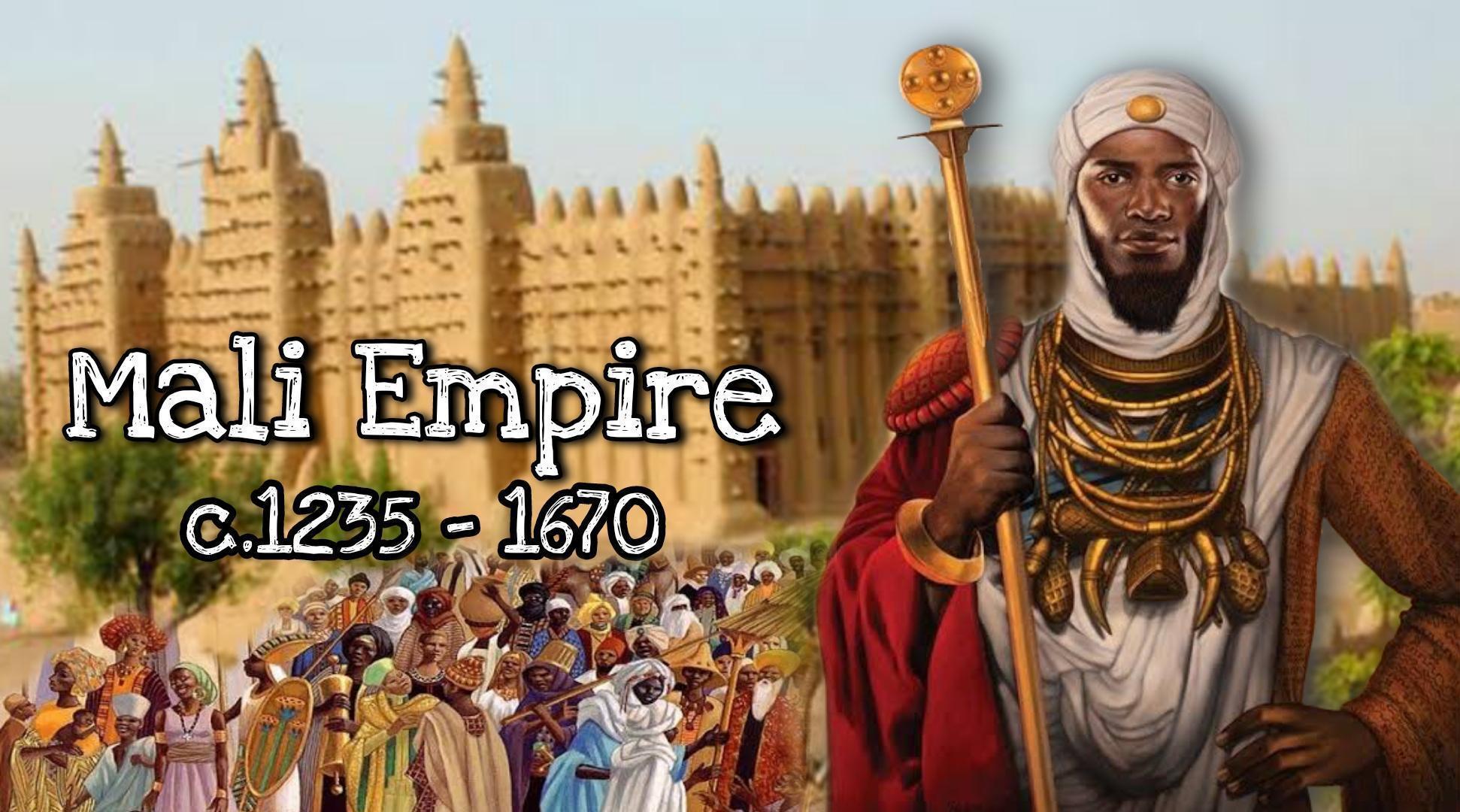The Mali Empire was an empire in West Africa from c. 1235 to 1670. The empire was founded by Sundiata Keita and became renowned for the wealth of its rulers, especially Mansa Musa. The Manding were most common languages spoken in Mali Empire.
The history of mali begins in 1050, with the Almoravids being the ruler of a small Malian state, when Baramendana invaded the Ghana empire. He was a Muslim and made a pilgrimage to Mecca, as every Malian ruler had to do. Several kingdoms, including Mali, became independent from Ghana after Abu Bekr’s death in 1087.
After this, little is known about the rulers till c. 1200, when the Susu Kingdom invaded Mali and killed all of the heirs to the throne under the reign of Sumanguru, with the exception of a young crippled boy called Sundiata who was exiled.
But Sundiata managed to recover and form an army. He defeated Sumanguru in 1235 in the battle of Kirina and took the throne again. However, he did not stop there. He defeated his uncle and sacked the Sangaran Kingdom, won the lab, and crossed the Niger to the east, subduing with him all on the way.
Sundiata destroyed the ancient city of Ghana in 1240, but he allowed the chief of the city to call himself King of Ghana, making him the only one entitled to call himself King. Later, his empire expanded from the Atlantic to the east of Kano, Katsina and Zaria, to the thick forests of the south, and to the north of the Sahara Desert. From Djeriba, Sundiata moved his capital to Niani in Upper Niger. The city of Niani no longer exists, but there is a small village of the same name in that location.
From Sundiata to Mansa Musa

Sundiata died in 1255, and his throne was taken over by his son, Mansa Ule. Bamkuk, Konkodugu and Gangaran were added to the Mali Empire under his rule. After him, the rulers of Mali were weak, making the situation so bad within the empire that a freed slave by the name of Sakuru proclaimed himself an emperor in 1285.
He was a powerful and ambitious ruler who led many military campaigns. The Tucolors and the Songhai of Gao were conquered. Trade flourished under his rule. Merchants also started to trade in Africa and the Middle East. He also made the annual visit to Mecca for the pilgrimage. He was assassinated on the coast of Tadjurah, on the Somaliland Seaboard, on his way back in 1300. Gau, Mamadu and Abu Bekr II, the next three successors, had no historical influence on the kingdom, reigning for just seven years.
Mansa Musa and Decline of the Empire
Mansa Musa went to the throne in 1307. In Europe, Africa, and Asia, he became a legend. The Mali Empire became known to the rest of the world under his leadership. He was the son of Abu Bekr II, the son of the Sundiata’s sister, who had made Mansa Musa the great-grandson of the Sundiata.
He chose to go on a pilgrimage to Mecca in 1324. He brought a caravan of 60,000 men and so much gold with him that the regional market in Mecca had been depressed for ten years. When he returned, he got news that the town of Gao had been captured. He decided to visit the city, instead of going directly to his home, and then went to Timbuktu. As a commercial city and cultural hub, Timbuktu has arisen. Under the rule of Mansa Musa, the establishment of the University of Sankore took place.
Under Mansa Musa, the Mali Empire reached its culmination and after his death c. In 1332, its decline began, but it was still a regional influence. It was also called upon by the King of Morocco, El Mamer, for example, for military assistance. The controversy between the chiefs, however, took its toll. In 1400, Gao revolted, and in 1431, Walata and Timbuktu were conquered by the Tuareg, and the empire gradually split up into small chiefdoms.
 The African History Truly African
The African History Truly African

